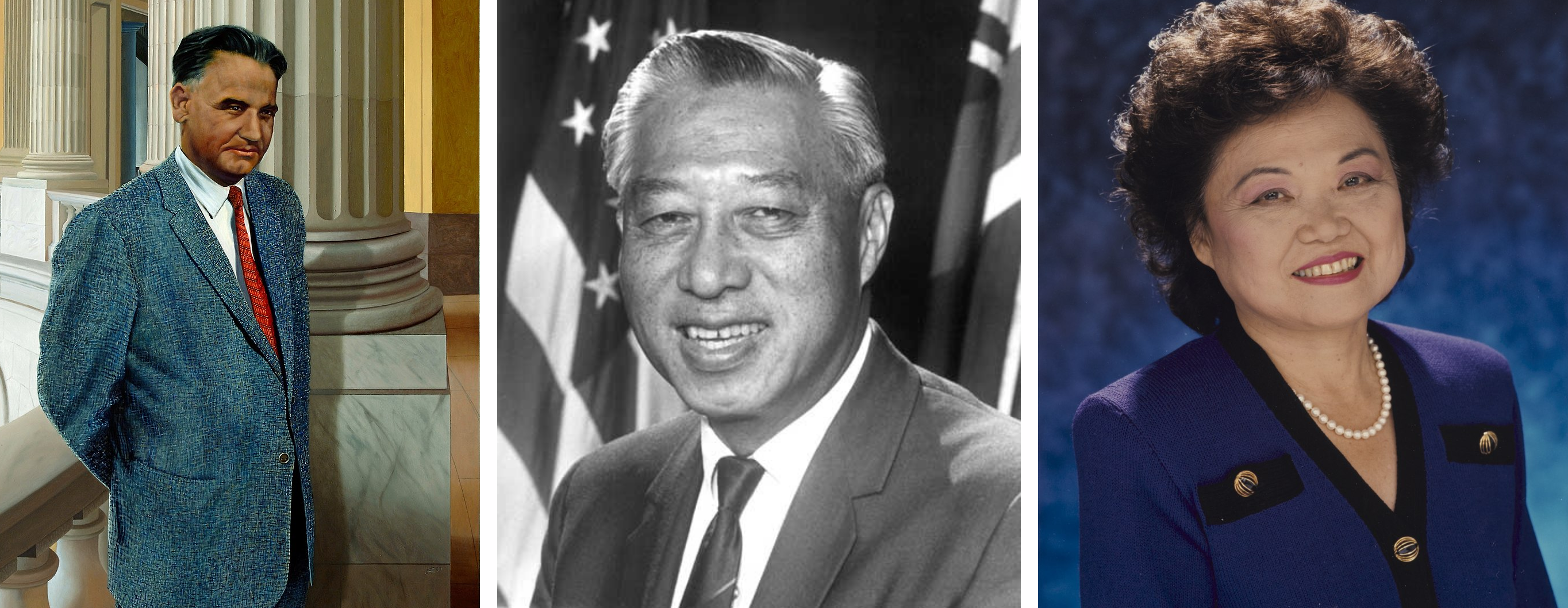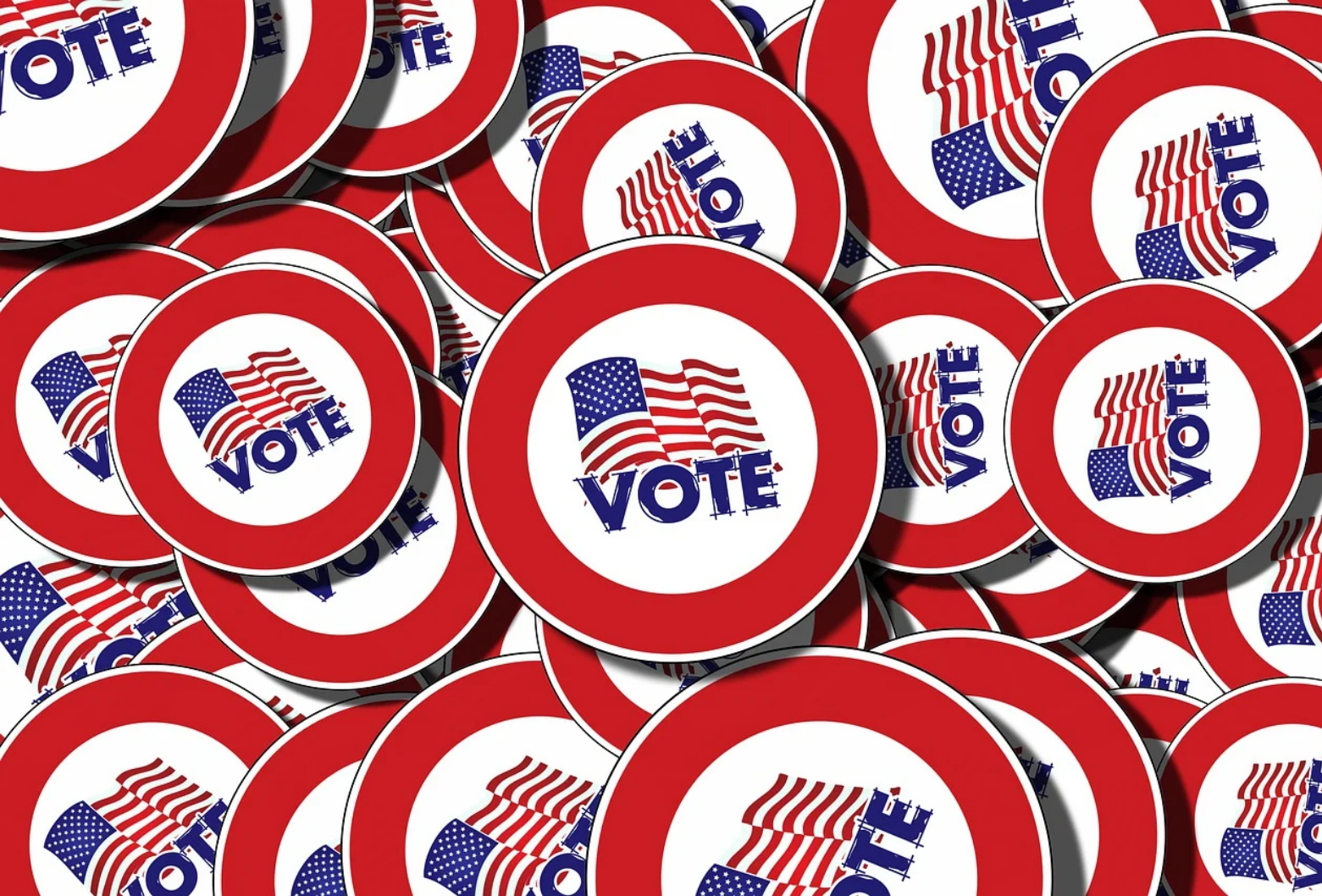6.5.1 APIDA Voice and Vote: Building Power through Civic Engagement
In collaboration with the Coulter Foundation, The Asian American Education Project has developed this unit to encourage young people to become more civically engaged.
Grade: 9-12Subject:
Civics, Social Studies
Number of Lessons: 8
Asian Americans are one of the fastest growing racial or ethnic groups in the United States. As such, they are also a growing share of the electorate. In this unit, students explore what success means for the Asian American community, and the role of civic engagement. Students examine the benefits and barriers of Asian Americans pursuing careers in public service, the importance of voting, and how volunteerism is connected to civic engagement.
Students will explore the following questions:
- What is civic engagement?
- What does success mean for the Asian American community and what role does civic engagement play?
- What are the benefits of, and barriers to, Asian Americans pursuing careers in public service?
- Why and how does representation in elected office matter?
- Why and how does voting matter?
- How are volunteerism and civic engagement connected?
Frontloading Prior Knowledge on Civic Engagement:
If basic civics (i.e., the study of the privileges and obligations of citizens) is a new concept to students, here are some resources:
Bibliography:
Loh-Hagan, V., Kwoh, J., Chang, J., and Kwoh, P .“Excluded from History: The Page Act of 1875,”
Social Education 86 (2), 2022,
https://drive.google.com/file/d/1qDN3OyT5MB20Vx26nfYHKTAODydLEMkg/view. Accessed 1 September 2024.
- Civic: relating to the duties and obligations of belonging to a community
- Responsibility: a duty or commitment
- Engagement: an active involvement
Lesson 1: Defining Civic Engagement
- Facilitate a discussion by asking the following questions:
- What does it mean to be a citizen of a nation?
- What powers and privileges does a citizen have?
- What are the responsibilities of a citizen?
- Define the following terms and display for everyone to see:
- Civic: relating to the duties and obligations of belonging to a community
- Responsibility: a duty or commitment
- Engagement: an active involvement
- Have students complete the worksheet entitled, “Civic Engagement and Civic Identity.”
- Have students define and give examples of civic engagement.
- Have students answer the following question: How would you rate or describe your current level of civic engagement?
- Allow students to privately journal their responses to the following questions: What guides your beliefs, politics, etc.? What do you use as your main sources of information? What is your sense of responsibility toward your community/society? How do you engage with others in social, political, and economic structures? How do you participate in a group/community? How would you like to advance your civic identity?
- Review the worksheet responses as a whole group and facilitate a discussion by asking the following questions:
- What does civic engagement have to do with living in a democracy?
- Why is defining and assessing your civic identity important?
- How and why does one’s civic identity change over time?
- Tell students the following: “One way to help develop your civic identity is to engage in civic activities. For example, by analyzing political parties' and/or individual politicians’ perspectives and arguments about public policies, you can make informed decisions on policies and candidates. This can also help you develop your own positions.”
- Have students identify an upcoming election. Have students study the issues and candidates, and write an essay in response to these prompts: What are the issues? Who would you vote for and why? What were the determining factors that solidified your vote? What does this convey about your civic identity?
Lesson 2: Examining Asian American Success
- Have students journal in response to the following prompts: How do you define success? How does your family define success? How does your community define success? How does society define success?
- Facilitate a discussion by asking the following questions:
- To what extent is our definition of success determined by others and/or by external factors?
- In what ways do definitions of success differ among various groups of people? What accounts for these differences?
- What role does civic engagement play in your definitions of success?
- Have students read these two articles:
- "#advanceAAPIpower” by Reflective Democracy Campaign
- “The Growing Power of the AAPI Vote, By the Numbers" by NPR
- Facilitate a discussion by asking the following questions:
- What is the main gist/general idea of both these articles?
- What did the articles convey about Asian Americans running for office?
- What did the articles convey about Asian American voter turnout?
- Why do these issues matter?
- Have students work in small groups to find recent statistics about Asian Americans in elected positions and about Asian American voter turnout. Facilitate a discussion by asking the following questions:
- Has the data changed? What accounts for the changes?
- What impact does this data have on upcoming elections?
- In general, why do elections matter?
- Have students go back to their definitions of success. Have them identify a profession that defines success for them. Have them pair-share and discuss how elections are connected to their chosen profession. (For example, if a student wants to be a doctor, then political issues such as insurance coverage, subsidies for low-income individuals, etc. matter.)
- Tell students the following: “For many minoritized groups, especially immigrants, the achievement of the ‘American Dream’ means success.” Have students define the “American Dream.” Facilitate a discussion by asking the following questions:
- Does everyone have equal access to the “American Dream”? Why do some groups have more access than others?
- How is the “American Dream” made possible by minoritized people running for office?
- How is the “American Dream” made possible by minoritized people voting?
- What role does civic engagement have in both defining and attaining the “American Dream”?

Dalip Singh Saund (left), Hiram Fong (center), and Patsy Mink (right) were among the first Asian Americans to be elected to Congress.
Credit: Left: Oil on canvas, Jon R. Friedman, 2007 Collection of the U.S. House of Representatives[1], Public domain, via Wikimedia Commons
Source Credit: Center: United States House of Representatives, Public domain, via Wikimedia Commons
Source Credit: Right: Library of Congress, Public domain, via Wikimedia Commons o
Source
Lesson 3: Analyzing Political Role Models
- Have students work in small groups and make a list of all the important decisions elected officials make.
- Have each group select three decisions.
- Have them discuss how those decisions impact them personally.
- Have students select and study a politician from a minoritized group. Have students complete the worksheet entitled, “Political Profile,” by answering the following questions:
- To which minoritized groups does the politician belong?
- What are the politician’s motivations for running for office?
- What were the politician’s barriers to getting elected?
- What are three major accomplishments that the politician achieved while in office?
- What is the politician’s legacy?
- How are we currently benefiting from the politician’s work?
- How did/does the politician’s identity as a minority impact his/her/their policies?
- Have students share their data in a table on a collaborative digital tool like Google Sheets. Have students work in small groups to determine similarities and differences.
- Facilitate a discussion by asking the following questions:
- What consistencies were evident in the politicians’ experiences in regard to motivations, barriers, policies, etc.?
- What accounts for the differences, if any?
- What role did the politicians’ minoritized identity play in their role as lawmakers?
- What conclusions can we draw about representation in regard to elected office? In what ways does representation matter?
- Tell students the following: “A representative government needs diversity in leadership to address the needs of all its citizens, especially in regard to underrepresented groups.” Facilitate a discussion by asking the following questions:
- Why should more Asian Americans run for office?
- What are the barriers and challenges that prevent Asian Americans from pursuing careers in public service?
- Would you run for office? Why or why not?
Lesson 4: Examining the Benefits of Elected Office
- Have students read the historical content on pp. 73-75, and Activity 3 on pp. 77-78, of the article entitled, “Excluded from History: The Page Act of 1875,” by The Asian American Education Project staff.
- Show the video and implement The Asian American Education Project’s lesson entitled, “Citizenship and Acts of Exclusion Against the Chinese.”
- Facilitate a discussion by asking students the following questions:
- Would the Chinese Exclusion Act have happened and existed for so long if there had been more Asian American voices in legislative positions?
- What are the benefits of having Asian American representation in politics? Why does representation matter?
Lesson 5: Analyzing the 2022 Georgia Senate Runoff Election
- Tell students the following: “One of the greatest powers that ordinary citizens have is to vote.”
- Have students read the following texts:
- “The Future of Voting: A Profile of AAPI Voters in Georgia” by Asian Americans Advancing Justice-Atlanta and Asian American Advocacy Fund
- “The Overlooked Constituency Both Parties are Now Targeting in the Georgia Runoff” by Politico
- Have students complete the worksheet entitled, “Analyzing Across Sources.”
- Have students answer the following questions and record their responses in the middle and right columns: What are the main points or claims in the article? What examples or evidence support the claims? How reliable is the source?
- Have students select a third text of their choice in any medium (i.e., article, podcast, video, etc.) and complete the chart. Have students answer this question at the bottom of the page: Why did you select this text?
- Have students analyze across all three texts and answer the following questions on the second page of the worksheet: What points or claims are consistent across all three sources? What points or claims seem contradictory across all three sources? What accounts for these differences? What questions are not being answered across all three sources?
- Facilitate a discussion by asking the following questions:
- What are the key points about Georgia’s Senate runoff election?
- Why was the Asian American vote significant in this election?
- What were some of the strategies both the Democrat and Republican parties used to reach out to Asian American voters in Georgia?
- How did the 2022 Georgia Senate runoff election demonstrate the importance of voting?
- Why is it important for Asian American communities (and all communities) to participate in voting?
- Tell students the following: “Being an informed voter is a big part of civic responsibility and civic engagement.”
- Why is it important to verify sources and to make informed opinions by analyzing several sources?
- What is the danger of not verifying sources?

Students analyze statistics and trends about Asian American voters.
Lesson 6: Analyzing Statistics and Voting Trends
- Share with students a few key statistics from the “2022 Asian American Voter Survey” by APIAVote, AAPI Data, and Asian Americans Advancing Justice:
- In the past two decades, Asian Americans have also become one of the fastest growing racial or ethnic groups in the United States. Between 2010 and 2020, the Asian population in the United States grew by 39%.
- The Asian American population is projected to pass 35 million by 2060.
- In 2020, almost 60% (7.6 million) of the Asian American citizen age voting population turned out.
- In battleground states such as Arizona, Georgia, Nevada, North Carolina and Pennsylvania, the number of Asian Americans who cast their ballot in 2020 exceeded the presidential margin of victory.
- Facilitate a discussion by asking students the following questions:
- What do these statistics convey?
- What factors do you think contributed to the significant increase in AAPI voter turnout in recent elections?
- Have students work in small groups to explore the APIAVote website, specifically the “2024 AAPI Voter State Fact Sheets.” Have students do a deeper dive on their own state’s fact sheet.
- Have students take notes on statistics or claims that resonate with them.
- Have students take notes on relevant voting trends especially in regard to Asian American candidates.
- Facilitate a discussion by asking the following questions:
- What did you learn?
- The AAPI Voter State Facts Sheets have a hashtag on the bottom left corner of every page, #PowerInNumbers. What is the significance of the term “power in numbers” within the context of voting and democracy?
- How might the growing political engagement of AAPI voters impact future elections, particularly in states like Texas, California, and Washington?
- In general, to what extent do you think the Asian American vote will matter for the upcoming elections - local, state, and federal?
- How might the growing influence of AAPI voters impact political strategies for the 2024 Presidential election?
- Why is it important to study statistics and voting trends? What are the limitations of these statistics and trends?
- Have students read the webpage entitled, “Why Vote?: Top 5 Reasons to Vote.” Facilitate a discussion by asking the following questions:
- Do you agree or disagree with the reasons listed in this text?
- What other reasons are there for voting?
- In what ways does your vote count? Why is it important to vote?
- Have students write an essay in response to this prompt: How do Asian American communities influence elections and why is their participation crucial for democracy?
Lesson 7: Reflecting on Election Issues
- Have students share out loud common or popular election issues. Record student responses for everyone to see.
- Have students complete the worksheet entitled, “Reflecting on Election Issues.”
- Have students reflect on the personal importance of each election issue noted in the left column of the first chart in Part 1. Have students indicate how important each issue is to them by checking one of the following boxes: Extremely Important, Very Important, Somewhat Important, Not That Important, or Don’t Know.
- Have students circle the top three issues that have the most importance to them.
- Have students list the sources that inform their positions on each election issue in Part 2.
- Display the data chart entitled, “Issue Importance: Asian American, All Issues” on p. 38 of the presentation entitled, “2024 Asian American Voter Survey.”
- Have students compare their rankings of issues as indicated in the “Reflecting on Election Issues” worksheet to the “2024 Asian American Voter Survey” results (p. 38). Facilitate a discussion by asking the following questions:
- What do you glean from this data chart? Which issues are the most important to Asian Americans and why? What issues are the least important to Asian Americans and why?
- In what ways are your responses consistent with the survey results?
- In what ways are your responses different from the survey results? What might account for these differences?
- Tell students the following: “Stances on election issues are important. Most people vote for candidates who adhere to most of their own stances on various election issues. However, some voters are party-line voters, meaning they vote for their political party no matter who the candidate is. Other voters are single-issue voters. This means they care more about a particular issue than the parties or candidates. Regardless, it is important to know candidates’ perspectives on key issues in order to make an informed vote.”
- Have students research candidates for an upcoming election in their cities, counties, or states. Have students complete Part 3 of the worksheet entitled, “Reflecting on Election Issues.”
- Have students identify the election at the top of the page.
- Have students record the top three election issues as indicated in Part 1 in the first row of the chart.
- Have students record the names of the top three candidates they would like to study in the first column.
- Have students record each candidate’s stance in the other columns under each corresponding issue.
- Have students respond to the question: Which candidate would you vote for and why?
- Facilitate a discussion by asking the following questions:
- What did you learn from doing this exercise?
- Why is it important to study the stances of candidates?
- What types of considerations did you make when you were asked to choose your final candidate?
- Why is it important to make an informed decision?

Students learn about volunteering and other forms of public service and civic engagement.
Lesson 8: Engaging in Public Service
- Facilitate a discussion by asking the following question: What does it mean to be committed to civic engagement and public service?
- Have students read the following texts:
- “Volunteerism and US Civil Society” by Stanford Social Innovation Review
- “Helping Out: How American Volunteerism is Changing - and Why” by the Associated Press
- Facilitate a discussion by asking the following questions:
- What did you learn about the history of volunteerism in the United States?
- What are the benefits of volunteering?
- Why might there be a decline in volunteerism?
- How do policies and politics affect volunteering?
- How is volunteerism connected to American democracy?
- Have students complete the first section in the worksheet entitled, “Volunteering as Civic Engagement.” Have students answer the following questions in the “Pre-Survey” section:
- Do you currently volunteer? If so, describe how much time you commit to volunteering, what you do, and why you do it. What are the challenges of your current volunteering commitment? If you are not currently volunteering, why is that?
- What social problems do you aim to solve? (What issues are important to you?)
- What is your current capacity in regard to time?
- What is your current capacity in regard to skills?
- What are your limitations in terms of the work you can do (i.e., transportation, internet access, etc.)?
- What do you hope to contribute to society?
- Invite students to work for the communities in which they live by finding a civic organization that exists to solve social problems and issues that they themselves are committed to. Tell students to review the list of organizations on the second page of the worksheet entitled, “Volunteering as Civic Engagement.” Give students several weeks to engage in a volunteer experience.
- Have students complete the last section in the worksheet entitled, “Volunteering as Civic Engagement.” Have students answer the following questions in the “Post-Experience” section:
- Name of organization
- Mission of organization
- What social issues does this organization purport to solve?
- How does this organization help the community?
- What was your role?
- How many hours did you volunteer?
- What did you learn?
- Why should others volunteer there? (Or not volunteer there?)
- Facilitate a discussion by asking the following questions:
- What are the benefits of volunteering?
- Why are community-based organizations important for civic engagement?
- What is the connection between volunteering and increased civic engagement?
- In what ways does volunteering increase a sense of civic responsibility?
- Have students write a reflection essay about their volunteer experience by addressing the following questions:
- How did your volunteer work positively impact yourself and your community?
- How did you grow as a result of the experience?
- How do you see yourself becoming more involved in civic engagement in the future?
- Tell students: “Democracy depends on informed citizens who have the knowledge, skills, and commitment to engage in their government.” Encourage students to respond to this quote.
Assessment: Reflecting on Civic Engagement
- Have students respond to the following prompts: Why and how does civic engagement matter? In what ways is voting a great equalizer in a democracy? (Tell students: “A homeless person’s vote is the same as a billionaire’s vote.” Allow students to debate this statement.)
- Have students present their ideas in one of the following ways:
- Response essay
- Op-Ed to be submitted to a local newspaper
- Podcast episode
- TikTok, Instagram Reel, or YouTube video
- Have students learn more about how Asian immigrant groups were denied the right to vote and about how they fought for voting rights. Have students create a visual timeline of this history.
- Have students apply the issues raised in this unit to other marginalized and minoritized groups. Jigsaw students into small groups and have each study a specific group. Then, have each group report out to the entire class to share their knowledge.
- Have students learn about the history of disenfranchisement in the United States by reading this article entitled, “Voting Rights: A Short History,” by Carnegie Corporation of New York. Have students compare past voter suppression to voter suppression techniques used today. Facilitate a discussion by asking these questions: How does voter suppression confirm the importance of voting? Why do some groups get to vote and not others?
- Have students read the article, “How a Native elections official is breaking down voting barriers in Arizona,” by The 19th News to learn about how Indigenous groups in Arizona have faced barriers to voting and how it’s being addressed. Have students compare the Native American experience to the Asian American experience.
- Have students read the article, “We Count: Untold Voter Stories - Nevada,” by CNN, which explains the recent significance of the Filipino American vote. Have students revisit the “Nevada AAPI Voter State Fact Sheet” to draw any conclusions about why the Filipino American vote matters in Nevada and how their voting trends may or may not differ from other Asian American groups.
- Have students create a voter engagement strategy. First, have students choose one issue that is important to them. Second, have them determine which demographic may care about this particular issue (e.g., young voters, first-time voters, etc.). Third, have them come up with a plan to engage this demographic around the selected issue. Have students produce a detailed plan of action, including outreach methods (i.e., social media, events, canvassing), messaging, and materials (i.e., flyers, videos, social media posts). Encourage students to share their assets with the candidate of their choice.
- Have students write a response to the following prompt: How can increased youth participation impact election outcomes, policy decisions, and the future of democracy? Have students cite at least two examples or statistics to support their claims.
- Have students learn more about what it means to be Undocumented. Facilitate a discussion by asking students the following questions: Is civic engagement for citizens only? What does civic engagement mean for those with undocumented citizenship status?
CCSS.ELA-LITERACY.RH.9-10.1:
Cite specific textual evidence to support analysis of primary and secondary sources, attending to such features as the date and origin of the information.
CCSS.ELA-LITERACY.RH.9-10.7:
Integrate quantitative or technical analysis (e.g., charts, research data) with qualitative analysis in print or digital text.
CCSS.ELA-LITERACY.RH.11-12.2:
Determine the central ideas or information of a primary or secondary source; provide an accurate summary that makes clear the relationships among the key details and ideas
CCSS.ELA-LITERACY.RH.11-12.7:
Integrate and evaluate multiple sources of information presented in diverse formats and media (e.g., visually, quantitatively, as well as in words) in order to address a question or solve a problem.






